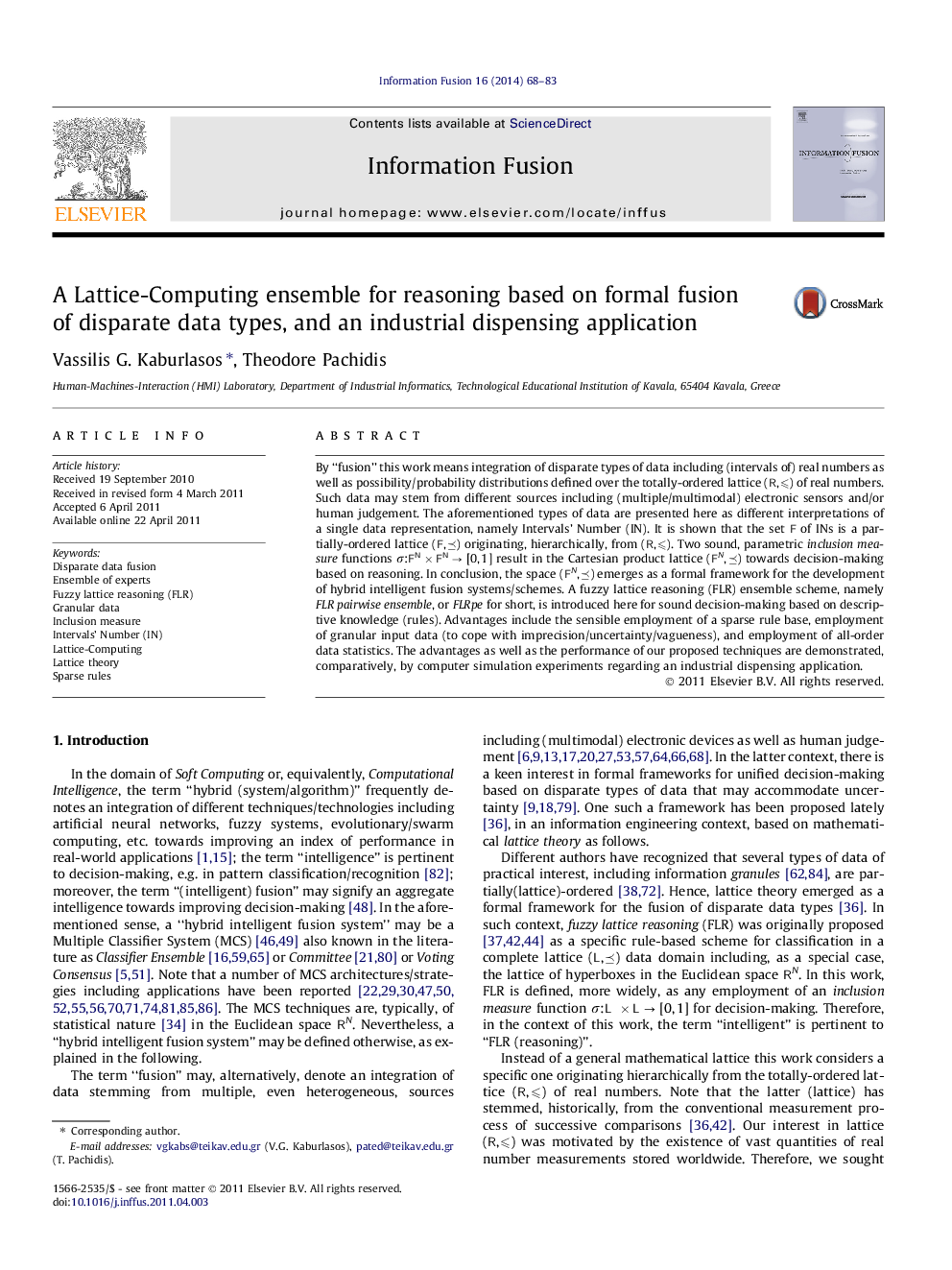| Article ID | Journal | Published Year | Pages | File Type |
|---|---|---|---|---|
| 532086 | Information Fusion | 2014 | 16 Pages |
By “fusion” this work means integration of disparate types of data including (intervals of) real numbers as well as possibility/probability distributions defined over the totally-ordered lattice (R, ⩽) of real numbers. Such data may stem from different sources including (multiple/multimodal) electronic sensors and/or human judgement. The aforementioned types of data are presented here as different interpretations of a single data representation, namely Intervals’ Number (IN). It is shown that the set F of INs is a partially-ordered lattice (F, ⪯) originating, hierarchically, from (R, ⩽). Two sound, parametric inclusion measure functions σ:FN × FN → [0, 1] result in the Cartesian product lattice (FN, ⪯) towards decision-making based on reasoning. In conclusion, the space (FN, ⪯) emerges as a formal framework for the development of hybrid intelligent fusion systems/schemes. A fuzzy lattice reasoning (FLR) ensemble scheme, namely FLR pairwise ensemble, or FLRpe for short, is introduced here for sound decision-making based on descriptive knowledge (rules). Advantages include the sensible employment of a sparse rule base, employment of granular input data (to cope with imprecision/uncertainty/vagueness), and employment of all-order data statistics. The advantages as well as the performance of our proposed techniques are demonstrated, comparatively, by computer simulation experiments regarding an industrial dispensing application.
► The mathematical lattice of Intervals’ Numbers (INs) stems from real numbers. ► INs integrate (granular) data stemming from either sensors or human judgment. ► Fuzzy lattice reasoning (FLR) is employed for tunable decision-making. ► The novel FLRpe scheme is applied on INs for robust decision-making by voting. ► Computer simulation experiments demonstrate comparatively advantages of FLRpe.
